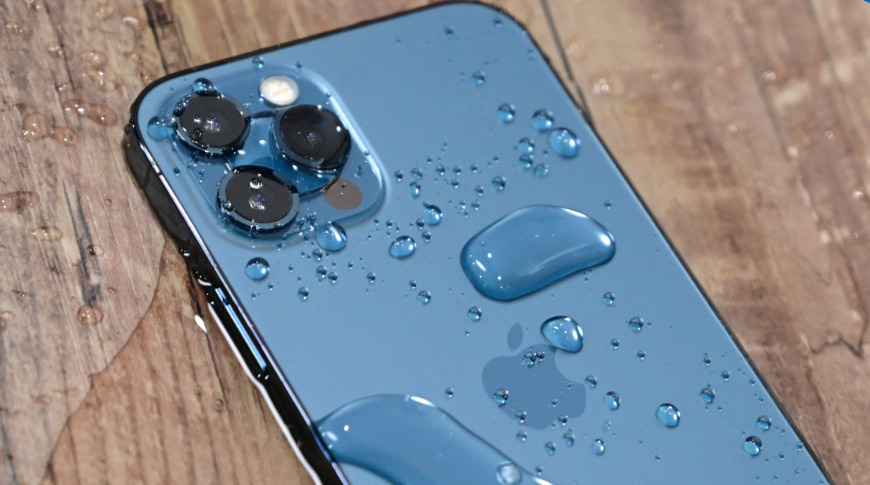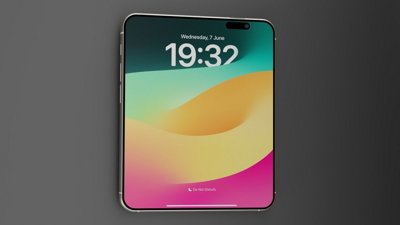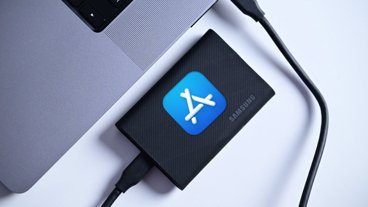From the iPhone 7 onwards, Apple has made iPhones at least a little water resistant. Here's exactly how resistant your phone is, and what Apple's claims really mean.
Apple's advertising cheerily shows people spilling drinks over their iPhones and not flinching. In reality, flinch. While iPhones since late 2016 have offered some protection against water damage, it's nowhere near enough to mean you can go swimming with one.
Water resistance is brilliant. It is a tremendous thing that Apple has managed to pull off for every phone since the iPhone 7. But if there's one thing that water resistance is not, it's water proof.
What we have now is the ability to probably survive a dunking, no more. And if that means no more burying your iPhone in rice as you cross your fingers it'll dry out, it does also mean that the phones are splash resistant.
Except just as you're starting to relax about the odd time some knocked wine over the table, there is also this warning from Apple.
"Splash, water, and dust resistance are not permanent conditions and resistance might decrease as a result of normal wear," says Apple in a support document. It's the support document people search for in a panic when the rice isn't working, and that warning doesn't console them.
So if your best option is to never let that iPhone anywhere near water, the second best is to know your limits. Here's what water situations each iPhone can theoretically take, at least the first time.
Note that strictly speaking, the iPhone 6 included some waterproofing. But you didn't hear that from Apple, so officially the first water resistant model was the iPhone 7.
Water resistance in iPhones
| iPhone model | Water resistance | IP rating |
|---|---|---|
| Original iPhone to iPhone 6 Plus | None | None |
| iPhone 7/iPhone 7 Plus | 1 meter up to 30 minutes | IP67 |
| iPhone 8/iPhone 8 Plus | 1 meter up to 30 minutes | IP67 |
| iPhone X | 1 meter up to 30 minutes | IP67 |
| iPhone XR | 1 meter up to 30 minutes | IP67 |
| iPhone SE (2nd Generation) | 1 meter up to 30 minutes | IP67 |
| iPhone XS/iPhone XS Max | 2 meters up to 30 minutes | IP68 |
| iPhone 11 | 2 meters up to 30 minutes | IP68 |
| iPhone 11 Pro/iPhone 11 Pro Max | 4 meters up to 30 minutes | IP68 |
| iPhone 12/iPhone 12 mini/iPhone 12 Pro/iPhone 12 Pro Max | 6 meters up to 30 minutes | IP68 |
Notice that several models have the same Ingress Protection (IP) rating, but not the same level of water resistance. As part of the International Electrotechnical Commission (IEC), this is IEC standard 60529, and defines ranges of protection.
What an IP water resistance rating means
The full details are in the documentation available to buy from the IEC. In brief, though, the 6 in the IP67 and IP68 ratings of iPhones, refers to the device being dust-tight.
Then the second digit, the 7 or 8, are to do with water resistance. Apple's iPhones rated as IP67, are dust-tight, and specifically tested to a depth of 1 meter (3 feet, 3 inches) for 30 minutes.
With those iPhones rated as IP68, there's more variation. Any device rated as IP68 is expected to withstand greater depth of water than IP67, and for longer, but otherwise it isn't as specifically defined.
Generally speaking, you can assume that IP68 devices have been tested up to 3 meters (9.8 feet), but you can't assume how long for. This is why the iPhone 11 and iPhone 12 are both rated IP68, but the former is tested for 4 meters depth of water, and the latter 6 meters.
One other key thing to note is that an IP rating need not actually mean that a device is water resistant or water proof. It can mean that while water may enter the device, it can only do so in such a way that won't damage it.
What to do when any iPhone gets wet
- Turn off the iPhone
- Wipe the iPhone with a soft, lint-free cloth
- Hold the iPhone upright and tap it gently to get liquid out of the Lightning port
- Let your iPhone dry out naturally before you try switching it on
What to do if you regularly work in or around deep water
There are cases marketed as waterproof. In reality, waterproof cases are not actually waterproof, they're just far more water resistant. Some are sufficiently more water resistant that you can use them for underwater photography, for a time.
Cases such as the iBelief Waterproof Case for iPhone 12 Pro, quote a rating of IP68, and specify that they work underwater for up to one hour, at a depth of 2 meters (6.6 feet). Others, such as those by Catalyst can offer resistance in up to 10 meters of water, but don't specify a time limit.
It's common to include a rating such as IP68, and no details. Some cases will just use the word "waterproof" and offer no more information than that.
Take that as a sign that water resistance is difficult — and take that as a sign that iPhones and water don't mix.
We can all be extremely relieved that Apple has managed to make iPhones more water resistant. But we still can't be casual about dramatically dropping our phones in ice buckets, or comedically dropping them in a restroom sink.
Keep up with AppleInsider by downloading the AppleInsider app for iOS, and follow us on YouTube, Twitter @appleinsider and Facebook for live, late-breaking coverage. You can also check out our official Instagram account for exclusive photos.
 William Gallagher
William Gallagher



 Mike Wuerthele
Mike Wuerthele
 Christine McKee
Christine McKee
 Amber Neely
Amber Neely
 Wesley Hilliard
Wesley Hilliard












